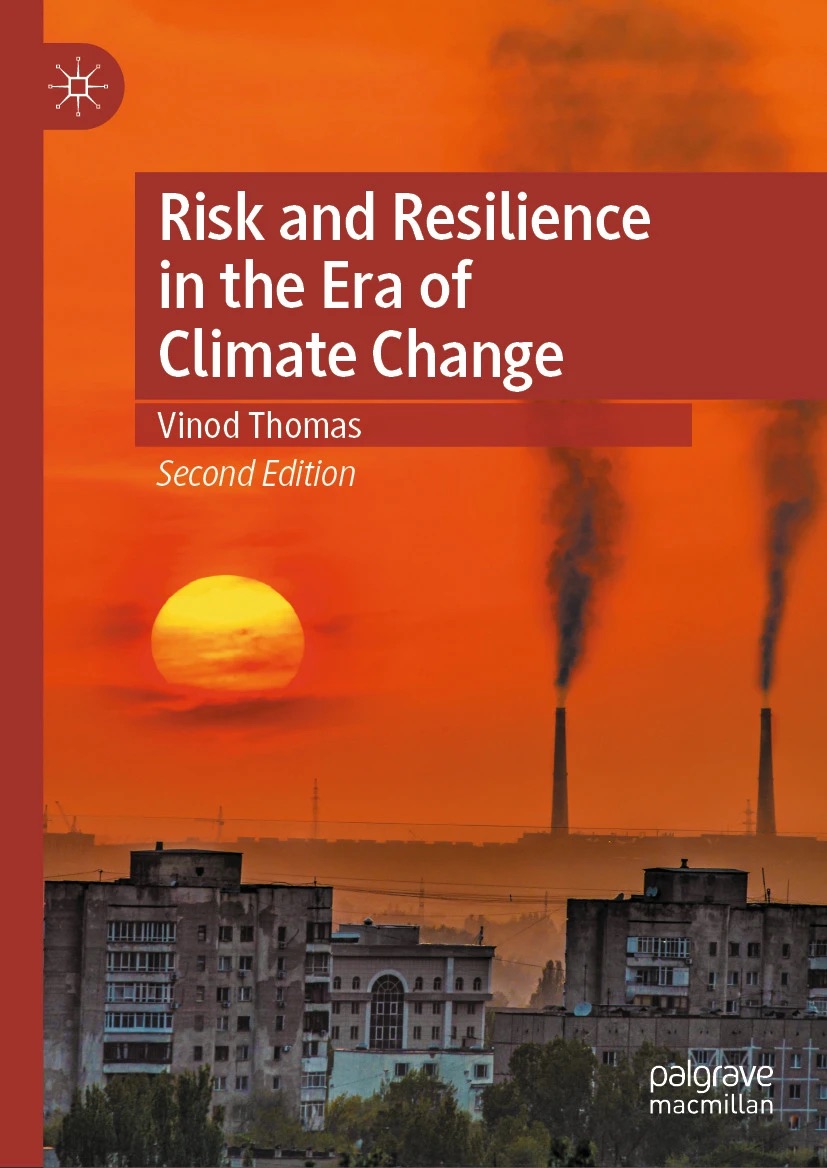Book Review - Risk and Resilience in the Era of Climate Change

Climate change and its effects are all around us. We see it in rising temperatures, increasing frequency of flash floods and cloud bursts, and rising sea levels. Our keen observation of our surroundings is complemented by the growing consensus in the scientific community about climate change, its tipping points, and its causal link to human action. Dr. Vinod Thomas, in the second edition of his book ‘Risk and Resilience in the Era of Climate Change’ unpacks this crisis. Dr. Thomas draws from decades of experience as an economist and disaster risk reduction expert in various multilateral organizations to explain how risk and resilience need to be conceptualized in the era of climate change.
There are three arguments in the book which particularly stand out. First, Dr. Thomas is one of the few authors to emphasize the importance of risk perception in policy action. Much of the writing thus far has focused on climate impacts and innovative solutions for climate resilience without paying sufficient attention to the cognitive dimension. The book’s discussion on the importance of risk perceptions, particularly on establishing a causal link between carbon emissions and weather extremes and its communication, is refreshing and crucial. Second, a case is made in the book for bringing economics and climate science together, emphasizing the ‘quality’ of economic growth over its quantity. The appeal is not new. In fact, it was made by Dr. Thomas and his colleagues twenty-five years ago in a World Bank report titled ‘The Quality of Growth’. A pre-occupation with short-term GDP growth has inhibited the discipline of Economics from adequately valuing climate investments and conservation actions, despite possessing a wealth of analytical tools which could be deployed (as has been done to advocate for investments in health and education). Lastly, the book discusses equity in multiple ways – responsibility for historic emissions, the staggering carbon footprint of the wealthy vis-à-vis the poor, and climate financing for adaptation and mitigation – all reminding us of how we got here and where we must go.
There are two dimensions of climate resilience that I felt the book could have explored further. First, much of the discussion in the book is at the scale of nations, where we find immense inertia to act on climate change. Indeed, that is precisely why the book is relevant. However, smaller regions and local areas (such as cities) have been working hard to reduce their emissions and to enhance adaptation. An exploration of the scalar complexities of climate change would have amplified the already compelling message of the book. Second, while equity has been discussed in the book, there is need to think about what is now being called as ‘equitable resilience’, wherein we examine whether innovative solutions for resilience are equitable in terms of who benefits and who is burdened. For example, many projects for urban greening have the potential to enhance gentrification, causing displacement of vulnerable populations. While traces of these two dimensions can be found in the book, greater engagement would have been beneficial.
This book is a must-read for policymakers, academics, planners, economists, and students as we grapple with climate change. It provides well-reasoned and feasible solutions which are not just for policymakers to think about, but for all of us as concerned citizens to critically engage with, discuss and debate, and bring to fruition.